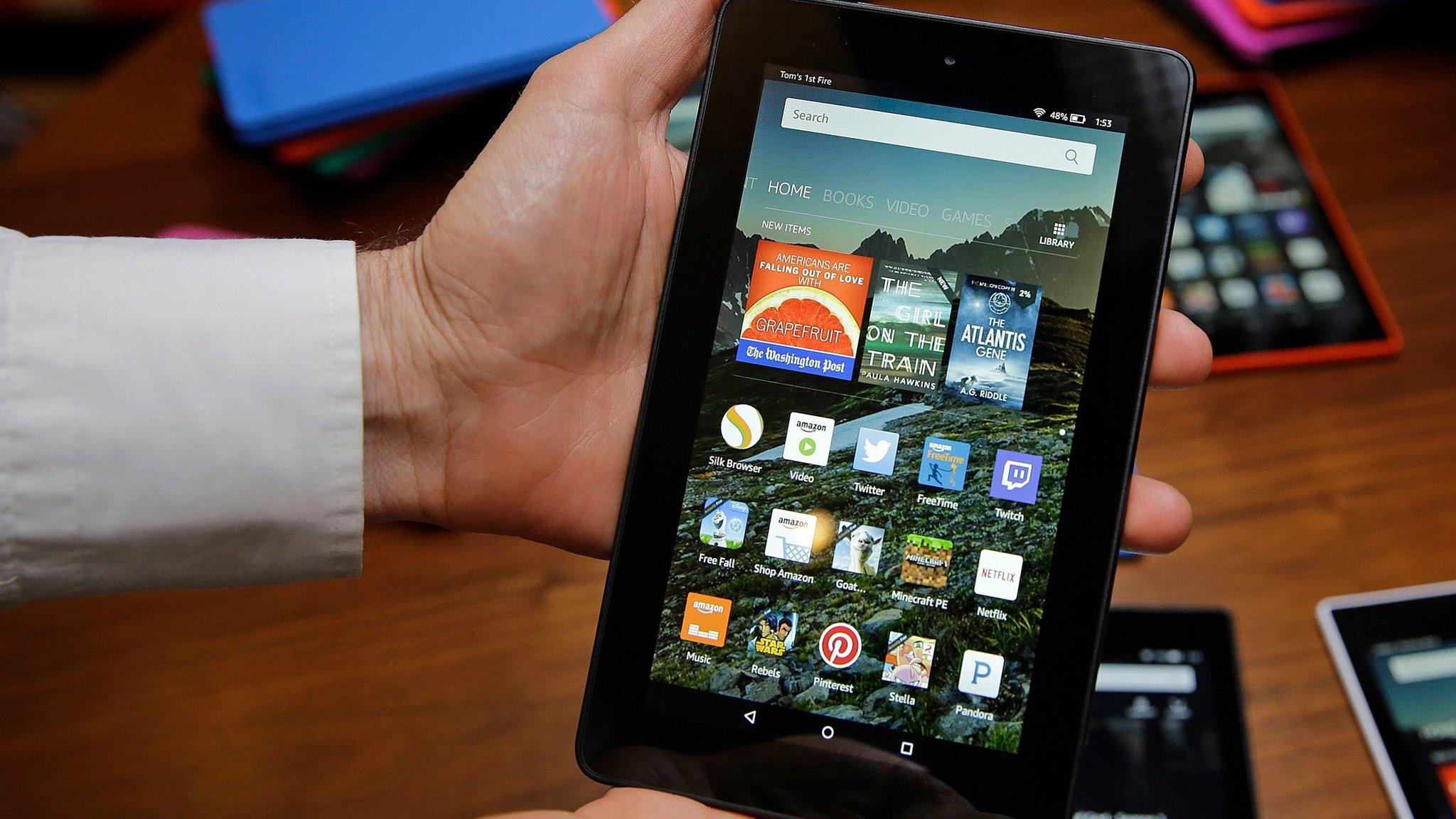Will Amazon's new launch keep us taking the tablets?
- Published
- comments
Rory goes hands on with Amazon's new gadgets
Amazon has lobbed a bomb into the cut-price tablet market, with a new device costing under £50.
The news comes just a week after Apple unveiled its very expensive iPad Pro, a tablet aimed at persuading professionals to give up their laptops. Two very different strategies in a market in need of a shot in the arm.
Just a couple of years ago tablets were the future of computing. But now sales appear to have reached a plateau - indeed, figures from IDC showed tablet shipments down 7% in the second quarter of 2015 compared to last year.
It's the waning interest in the iPad which stands out from the statistics, but Amazon has also struggled. At the end of 2014 it was in fifth place in the IDC figures with sales down 70% over the holiday period compared with the previous year.
Today it showed off four tablets, all aggressively priced. The 10" and 8" Fire HD devices were touted as the ultimate entertainment devices, with high quality widescreen displays in a thin and light body. Then there was a Kids' Edition tablet, rugged enough to stand all kinds of battering, with access to plenty of age-appropriate material.
But it is the 7" Fire at £49.99 that is Amazon's key weapon and will have its budget rivals worried. The company says low-end tablets suffer from poor quality components and short battery life and deliver a poor customer experience - and insists the Fire is different. A demonstrator held one up alongside a Samsung tablet costing twice as much and showed that the screen on the Amazon device displayed video better.
At another point in the demo, an Apple iPad Air 2 with a broken screen was produced. This, we were told, had happened after 20 revolutions in a testing machine, while the Fire had survived being spun round 200 times.
Amazon also unveiled the latest version of its Fire TV set-top box. The key novelty here was that it displayed 4K video, the new ultra-high-definition standard, unlike the latest Apple TV unveiled last week. Again, it was about half the price of the Apple product.
Just like the new tablets, the real aim of the set-top box is to give buyers a reason to buy Amazon content, and in particular to sign up to an annual subscription to Prime, which gives them fast delivery and free access to its video service. The margins on the hardware are undoubtedly wafer-thin - Amazon's founder Jeff Bezos told me three years ago that the firm made no profit on its tablets and I suspect little has changed.
But Mr Bezos's hardware ventures have had mixed results. The Fire smartphone he launched with such fanfare a year ago has now been quietly withdrawn. He had made big claims for its unique technology but a high price seemed to deter many from giving it a try.
Now it is back to the bargain basement strategy- there is even a "buy five, get one free" offer on the new Fire. A cut-price tablet will probably not give Apple many sleepless nights - but the likes of Samsung and even Tesco with its Hudl, will be wondering whether it is worth continuing to pour money into a market where the competition seems unconcerned about making a profit.
- Published17 September 2015
